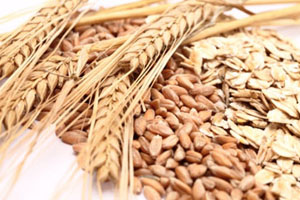Whole-grain diets combat C. Jejuni in chicken

Campylobacter jejuni, the commonest cause of bacterial diarrhoea in western countries, is found in the chicken intestine and can be transferred to the meat during slaughtering. It does not make the chicken’s health worse, but it is a major problem for the poultry industry and represents a potential risk to public health, since the bacteria survives well in non-processed poultry products.
Norwegian researchers into food safety have now investigated whether feed could make chickens more resistant to Campylobacter jejuni (C. jejuni). More coarsely ground feed, the addition of certain organic acids and feeding at certain specified times all appear to reduce the risk of infection.
“Once C. jejuni comes into a chicken house, it spreads to the entire flock in a matter of days. Strict hygiene barriers in the traffic of people and equipment are an important tool, but we also need strategies for reducing or eliminating the bacteria from the chickens once they have been infected,” says Research Scientist Birgitte Moen at the Norwegian food research institute, Nofima.
Using the chicken’s own barriers
Chickens have several natural barriers against pathogenic bacteria in the upper part of their digestive tracts. Here we find the crop, with its lactic acid bacteria, and gizzard, which performs the chewing function. Because chickens have no teeth, the feed goes straight through the oesophagus and into the crop, where it is temporarily held and moistened. The feed is then “chewed” down to a suitable size in the gizzard. Chickens that eat whole grains get a larger and more well-developed crop, which gives better protection against bacterial infection.
“We have tested various methods to see how the functions of the crop and gizzard can best be utilised, so that fewer pathogenic bacteria reach the intestine,” says Moen.
The barrier function of the crop can be improved by adding organic acids to the feed and by mealtime feeding. By mealtime feeding, we mean that the chickens have access to feed at specific times during the day, instead of continuous access. The gizzard does a better job as a barrier when the feed has a coarse structure.
Necessary to combine organic acids
Sorbic acid, together with some of its salts (especially potassium sorbate), is one of the most widely-used antimicrobial substances for the preservation of food. Formic acid has previously displayed a high bactericidal effect on C. jejuni in laboratory trials.
“Our trials have shown that when both these organic acids, formic acid and potassium sorbate, are added to the feed, the incidence of C. jejuni in the chicken intestine is reduced. It is the combination that gives a very positive effect. Adding only one of the acids has very little effect,” says Moen.
The project “Reduction of C. jejuni in the food chain by modifying the upper part of the digestive system of chickens for slaughter” is a collaboration between Nofima, the National Veterinary Institute, the Norwegian University of Life Sciences, Nortura and the poultry research centre Animalia Fjørfe. The project is financed by the Research Council of Norway, the Foundation for Research Levy on Agricultural Products, research funds from the Agricultural Agreement and Animalia Fjørfe.













